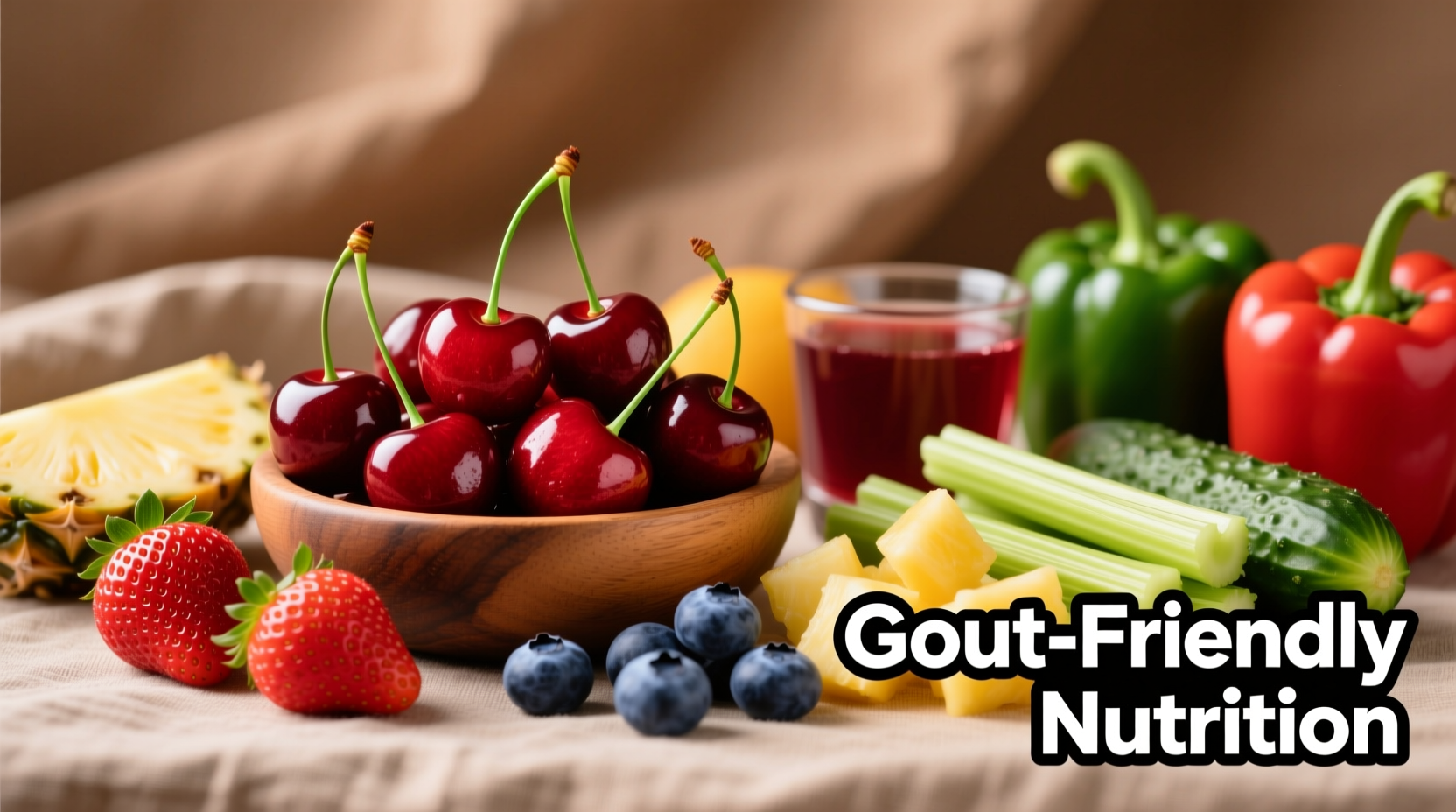High-purine foods like organ meats, certain seafood, red meat, and alcohol significantly increase gout risk by elevating uric acid levels. Conversely, cherries, low-fat dairy, vegetables, and adequate water intake help lower uric acid and reduce gout flare frequency. This evidence-based guide reveals exactly which foods to prioritize and avoid for effective gout management.
If you're managing gout, understanding what foods affect gout is crucial for preventing painful flare-ups. Research shows dietary changes can reduce uric acid levels by 15-20%, significantly decreasing attack frequency. This comprehensive guide delivers actionable food strategies backed by medical research from rheumatologists and nutrition specialists.
Understanding the Gout-Diet Connection
Gout develops when uric acid crystals accumulate in joints, causing intense pain and inflammation. Uric acid forms when your body breaks down purines—natural compounds found in certain foods. While your body produces purines internally, dietary choices significantly impact uric acid levels. According to the Centers for Disease Control and Prevention, approximately 9.2 million American adults have gout, with diet playing a critical role in management.
Medical professionals emphasize that while medication remains essential for many gout patients, dietary modifications serve as a powerful complementary approach. The National Institutes of Health confirms that strategic food choices can lower serum uric acid concentrations by reducing purine intake and enhancing excretion.
Foods That Trigger Gout Flare-Ups
Identifying high-purine foods represents your first line of defense against gout attacks. These foods dramatically increase uric acid production, overwhelming your body's elimination capacity.
Meat and Seafood to Avoid
Organ meats like liver and kidney contain exceptionally high purine levels. Certain seafood varieties also pose significant risks:
| Food Category | Purine Content (mg/100g) | Gout Risk Level |
|---|---|---|
| Organ meats (liver, kidney) | 300-500 | Extreme |
| Anchovies, sardines, mussels | 200-400 | Very High |
| Red meat (beef, lamb) | 100-200 | High |
| Turkey, venison | 100-150 | Moderate-High |
Alcohol and Sugary Beverages
Beer deserves special attention—its dual impact comes from both alcohol content and purine-rich yeast. The Mayo Clinic reports that beer increases gout attack risk by 49% compared to other alcoholic beverages. Sugary drinks containing high-fructose corn syrup also elevate uric acid production significantly.
Foods That Combat Gout Naturally
Strategic food choices can actively lower uric acid levels and reduce inflammation. These evidence-based dietary allies work through multiple physiological pathways.
Cherries: Nature's Gout Fighter
Multiple studies, including research published in Arthritis & Rheumatism, demonstrate that regular cherry consumption reduces gout attack risk by 35%. The anthocyanins in cherries inhibit inflammatory pathways while promoting uric acid excretion. Fresh, frozen, or unsweetened juice all provide benefits—aim for 10-12 cherries daily during high-risk periods.

Dairy's Unexpected Benefit
Low-fat dairy products contain orotic acid, which enhances uric acid excretion. A landmark study tracking 47,000 men over 12 years found that those consuming two daily servings of low-fat dairy experienced a 44% lower gout incidence. Incorporate skim milk, low-fat yogurt, and cottage cheese into your daily routine for optimal results.
Practical Meal Planning Strategies
Effective gout management requires consistent dietary patterns rather than isolated food choices. Implement these practical approaches:
- Protein rotation: Alternate plant-based proteins (tofu, legumes) with moderate portions of low-purine animal proteins
- Hydration protocol: Drink 8-10 glasses of water daily, plus additional fluids during exercise or hot weather
- Vegetable variety: Include diverse vegetables—even moderately high-purine options like spinach become low-risk when consumed in standard portions
- Smart substitutions: Replace beer with herbal tea, choose chicken over red meat, and use olive oil instead of saturated fats
When Diet Alone Isn't Enough
Understanding the context boundaries of dietary management proves essential. While food choices significantly impact gout, certain factors limit diet's effectiveness:
- Genetic predisposition affecting uric acid processing
- Medications that elevate uric acid (diuretics, immunosuppressants)
- Chronic kidney disease reducing elimination capacity
- Severe hyperuricemia requiring pharmaceutical intervention
The American College of Rheumatology emphasizes that medication remains necessary when serum uric acid exceeds 9 mg/dL or when frequent attacks occur despite dietary management. Think of food strategies as working synergistically with medical treatment, not as replacements.
Evolution of Gout Dietary Recommendations
Gout dietary advice has evolved significantly over time. Historical approaches focused exclusively on strict purine restriction, often leading to nutritional deficiencies. Modern research reveals a more nuanced understanding:
- 1950s-1980s: Extreme low-purine diets eliminating all meat, fish, and legumes
- 1990s-2000s: Focus shifted to avoiding only the highest-purine foods
- 2010s-present: Holistic approach emphasizing beneficial foods alongside avoidance
Current guidelines recognize that certain high-purine plant foods don't increase gout risk like animal-based purines. This evolution reflects deeper understanding of purine metabolism and food matrix effects.
Creating Your Personalized Gout-Friendly Diet
Successful gout management requires individualized approaches. Consider these implementation steps:
- Keep a detailed food and symptom journal for two weeks
- Identify personal trigger foods through elimination and reintroduction
- Consult a registered dietitian specializing in metabolic conditions
- Gradually implement changes rather than abrupt dietary shifts
- Monitor uric acid levels with your healthcare provider every 3-6 months
Remember that consistency matters more than perfection. Occasional indulgences won't derail your progress if you maintain overall dietary patterns that support healthy uric acid levels.











 浙公网安备
33010002000092号
浙公网安备
33010002000092号 浙B2-20120091-4
浙B2-20120091-4